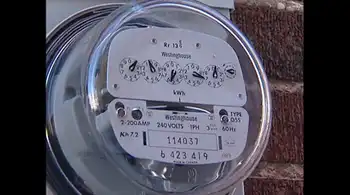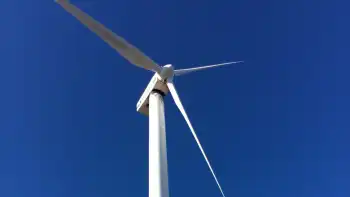Smart metering – Texas style
By UtiliPoint
CSA Z463 Electrical Maintenance -
Our customized live online or in‑person group training can be delivered to your staff at your location.

- Live Online
- 6 hours Instructor-led
- Group Training Available
Although many consider California to be at the forefront of Smart Grid policy development, Texas policy requires AMI to be capable of providing customers with real-time access to their electric consumption data. The Public Utility Commission of Texas has paved the way by allowing utilities to file cost recovery for meter deployments.
After gaining Commission approval in December, CenterPoint Energy is one of the latest utilities to announce the start of full field deployment plans for installation of smart grid technology. Following a successful pilot, CenterPoint Energy has contracted with Itron Inc. to roll-out 2.4 million Itron meters utilizing Itron's OpenWay networking technology.
Initial installations began in March and will continue into early 2014. CenterPoint Energy is using the OpenWay smart metering technology as a first step in moving electric infrastructure into a fully functional Smart Grid. When completed, CenterPoint's rollout will cover its 5,000-square-mile service territory in and around the Houston metropolitan area. CenterPoint will be spending approximately $640 million during the next five years with a recovery period of 12 years. Cost recovery will be accomplished with a monthly surcharge on residential electricity providers that purchase its power for retail to consumers.
Technology is critical in providing communication to other devices, including load control, prepayment systems, and monitoring. The overall systems integration is necessary for collecting and communicating data needed for intelligent monitoring and controlling required for improving the stability and reliability of distribution networks.
The OpenWay system provides secure end-to-end messaging from its collection engine to end devices. It also utilizes multiple open standards including IP, SOA, XML, ANSI C12.22, and ZigBee to support a multitude of devices that may be required in the future.
The Public Utility Commission of Texas is actively educating their consumers on the benefits of Smart Meter technology. In the PUCT March publication, Volume 10 Issue 4, the commission states that new technology "could transform consumers' relationship with electricity from passive to interactiveÂ… consumers will be able to see the correlation between consumption and price and make educated adjustments, such as turning their air conditioner setting up during hours that they are not at home."
The 2008 report to the 81st Texas Legislature on Advanced Electric Metering required by House Bill 2129 makes its case for smart metering by stating that "AMI enables customers to have more control over their electric billsÂ… evidence demonstrates that customers will respond to the appropriate price signal and the right incentive by reducing consumption." The report continues by referring to a California study that revealed real time pricing with AMI could reduce demand during high times buy 27 percent and by 43 percent for customers with advanced automatically controlled electric consumption systems.
The Texas Legislature had to balance the interest of customers, distribution utilities, and Retail Electric Providers (REP) when established its ruling concerning smart meter functionality requirements and cost recovery surcharge. With Texas being an open retail electricity market, distribution utilities are responsible for delivery and metering of electricity but REPs cover metering costs.
REPs are customer facing entities responsible for marketing, purchasing, and billing of electric power to their customer base. Meter usage data will be collected every 15 minutes providing consumers with detailed snapshots of their electric consumption. Data collected by new Smart Meters will provide REPs with new ways to offer innovative pricing, packages, and services to their current and prospective customers. This could be expanded to including prepaid, hourly, critical peak, rebate and other time of use rate options. With open communication standards, REPs could also offer services to help consumers control electricity consumption by providing real time interface back to major appliances and equipment such as air conditioners, pool pumps, and electric car charging.
Smart Metering will also allow the Texas REP to better manage the amount of bad debt risk that it assumes. With the ability to perform remote connects and disconnects, not only will REPs be able to provide better service by reconnecting customers quickly that have been disconnected due to non-payment, but they will also be able to pass on reduced costs to customers since truck rolls will no longer be necessary. High risk customers in Texas currently maybe subject to higher rates and deposits, but with the ability to offer prepaid functionality REPs can provide electric service at a more competitive cost since bad debt risk will be greatly reduced.
Even though Texas utilities are moving to large scale smart meter deployment, technology is only one building block needed to take advantage of full Smart Grid benefits. While increased reliability and stability may be an immediate benefit of new technology, transformation to rate plans that reflect peak costs is needed to encourage consumers to manage consumption by providing cost savings incentives. It will be interesting to watch how various players in the Texas market will put together product offerings to consumers.











